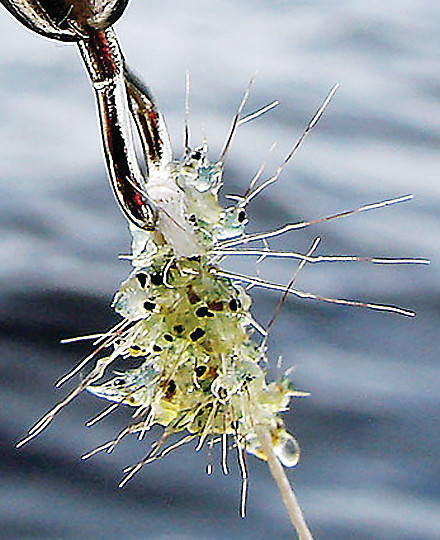Support the Timberjay by making a donation.
DNR confirms: Spiny waterfleas in Lake Vermilion
LAKE VERMILION— It was probably just a matter of time. With spiny waterfleas already present in a number of other large nearby lakes, this week’s confirmation that the invasive spiny waterflea …
This item is available in full to subscribers.
Attention subscribers
To continue reading, you will need to either log in to your subscriber account, or purchase a new subscription.
If you are a current print subscriber, you can set up a free website account and connect your subscription to it by clicking here.
If you are a digital subscriber with an active, online-only subscription then you already have an account here. Just reset your password if you've not yet logged in to your account on this new site.
Otherwise, click here to view your options for subscribing.
Please log in to continue |
DNR confirms: Spiny waterfleas in Lake Vermilion
LAKE VERMILION— It was probably just a matter of time. With spiny waterfleas already present in a number of other large nearby lakes, this week’s confirmation that the invasive spiny waterflea had made its appearance in Lake Vermilion was a disappointment, but hardly a surprise.
“It’s a bummer, but it wasn’t totally unexpected,” said Duane Williams, large lake specialist with the Department of Natural Resources’ Tower area office.
Given the large number of major lakes in the area where the “spinies” are already found, and the high level of boat traffic in and out of Lake Vermilion, Williams said keeping the big lake free of the waterfleas was an almost impossible task.
The spinies were first detected by anglers in and around Ely Island, who provided a sample to the DNR, which confirmed the identification. DNR aquatic biologists subsequently surveyed portions of the lake with plankton nets and weighted lines to confirm the presence of waterfleas in the lake. Live specimens were located near JB and Ely islands in the lake’s eastern basin.
Lake Vermilion and the Vermilion River will be now designated as infested waters for the waterfleas, and signs will be posted at public water access points to alert boaters and other lake users. Crane Lake, a downstream water, is already designated as infested with spinies.
Officials with the Lake Vermilion Sportsmen’s Club, who have worked hard to keep invasive species out of Vermilion, expressed their disappointment, but said the group will be stepping up their launch-site boat inspections and education efforts in the wake of the latest finding. “To slow their spread to other areas of the lake, our volunteer inspectors will continue to look for spinies as boats launch at Vermilion,” said Jeff Lovgren, Sportsmen’s Club president. “In addition, we must now put an increased emphasis on being sure no Lake Vermilion water is carried by a trailered boat to another lake. We will be talking more to boat operators about the importance of draining all residual water as they leave our lake, clearing aeration lines for bait and live wells, and cleaning and drying fishing equipment, like nets and downrigger cables.”
Spiny waterfleas frequently spread from lake to lake by hitchhiking in bait buckets and live wells which are not completely dry.
The spinies are tiny 3/8” planktonic crustaceans that consume large numbers of smaller zooplankton, disrupting the food source for young-of-the-year fish. Rapid growth of juvenile fish during the first summer improves winter survival. The species reproduces by a process called parthenogenesis. Most of the year, the species population is entirely female, which allows for rapid population growth. Microscopic spiny waterflea eggs are hardy and capable of overwintering in lakes, and their small size makes them an easy candidate for overland transfer in water or mud.
When populations are high, anglers can experience frustration with masses of spiny waterfleas clogging fishing and downrigging lines, and other water equipment.
Williams said the arrival of the spinies is likely to reduce the density and the diversity of zooplankton in Lake Vermilion, although he said, so far, there’s not much evidence that the arrival of spinies in other lakes has impacted fish populations. “It’s not the end of the world, but it adds another stressor to the fish population. It makes them a bit less resilient. Over the long-term, however, we could see more effects,” he said.
Most fish, tulibee being an exception, don’t appear to consume the spinies, according to Williams. The invasive organisms are larger than other zooplankton and their long spines make them less that palatable to most small fish.
Individual “spinies” are difficult to see but can accumulate as a noticeable gelatinous glob with protruding spines (tails) on fishing line, downrigger cables or anchor lines. The Sportsmen’s Club will soon make identification cards and sample collection kits available to boat operators at Lake Vermilion’s 54 public and resort launch sites.






